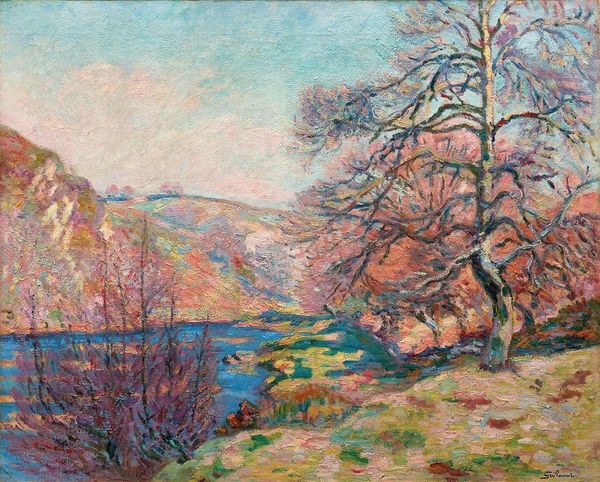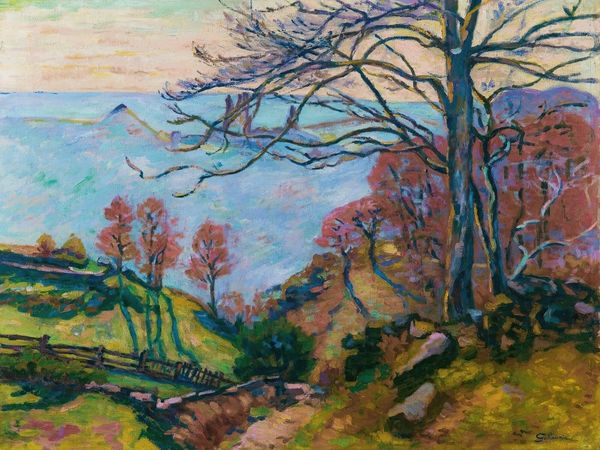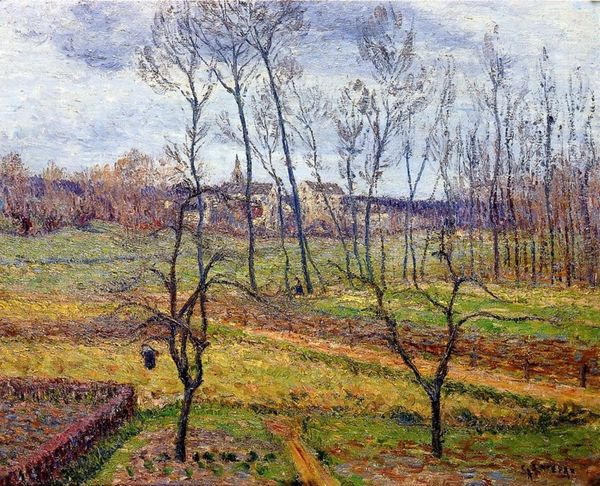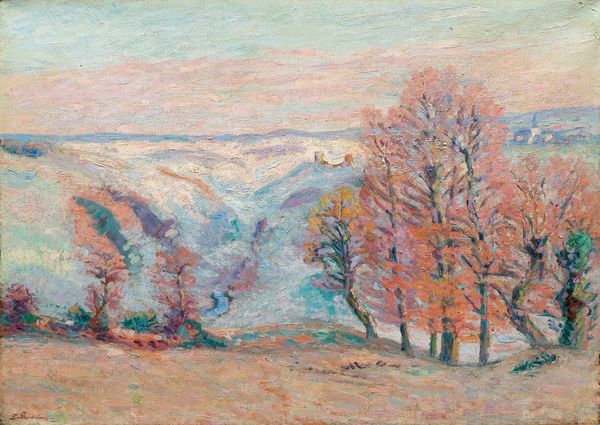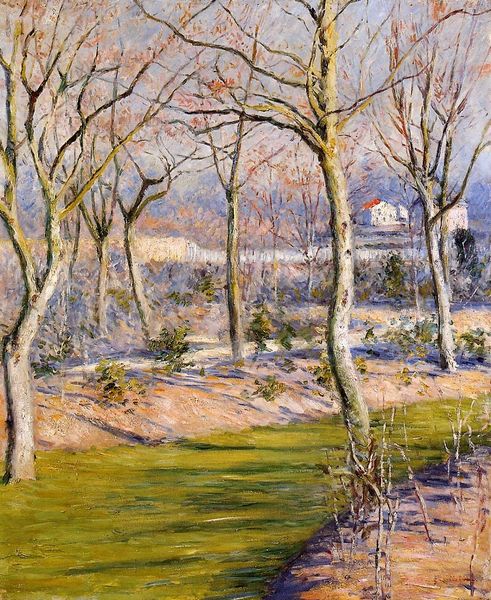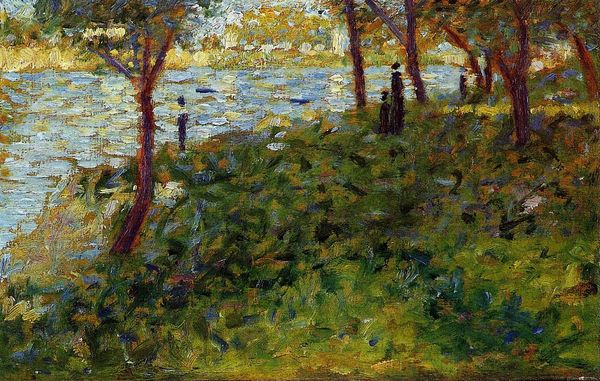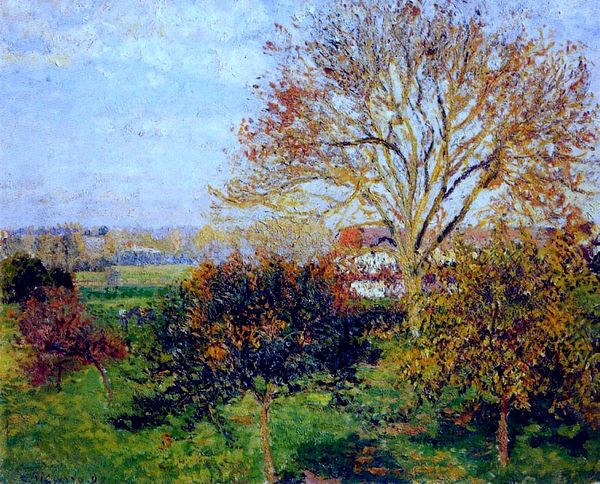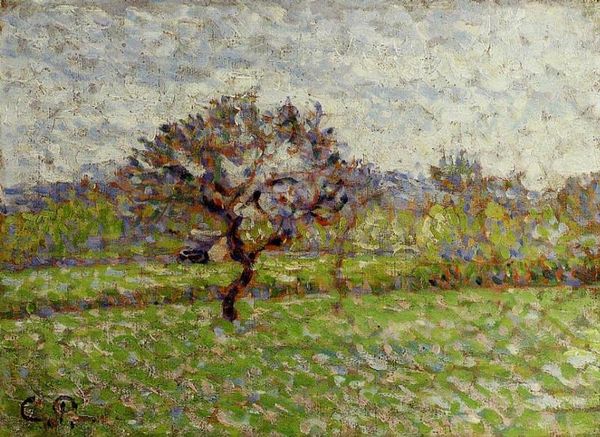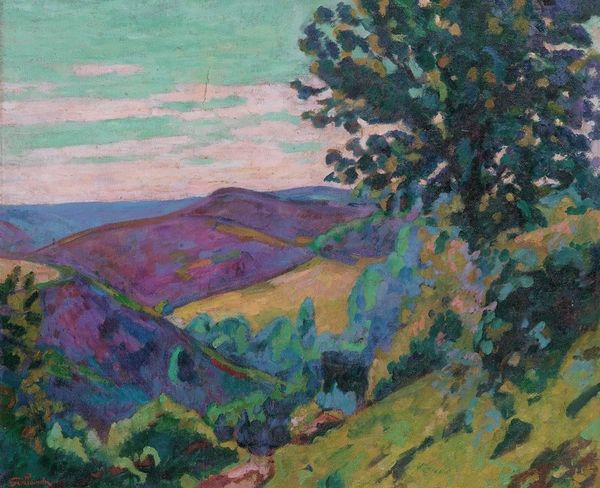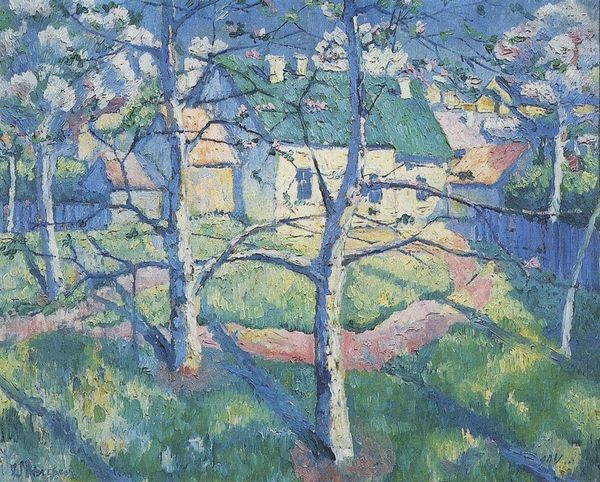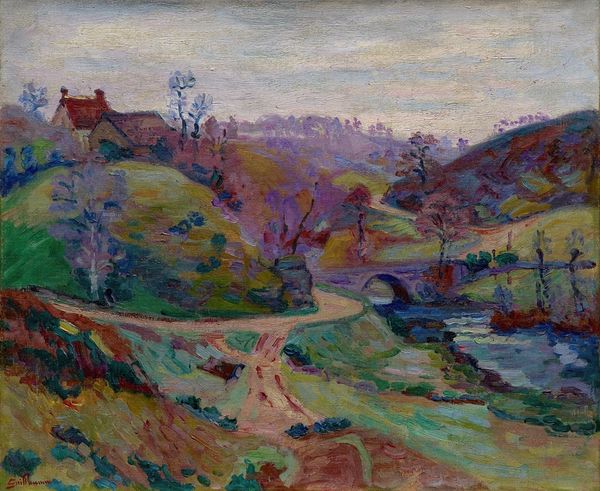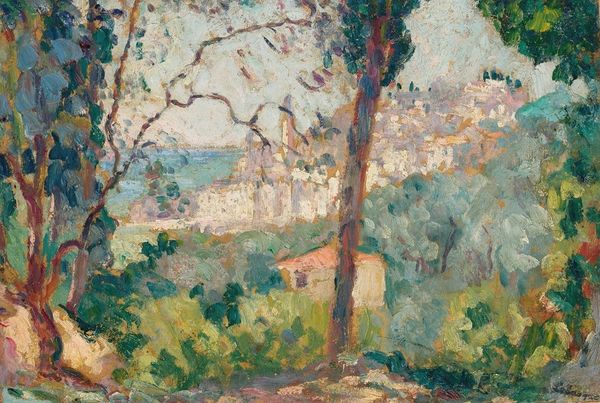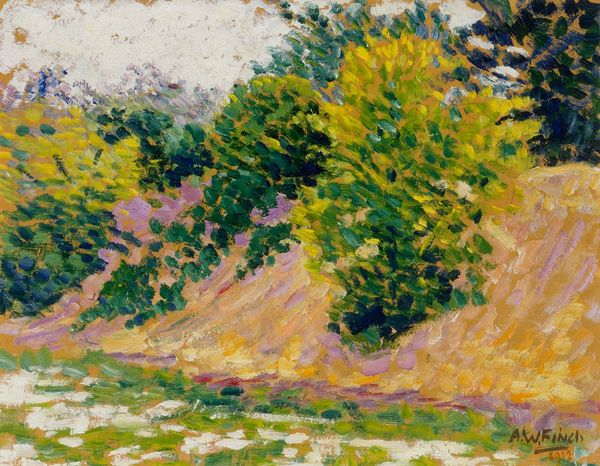
Copyright: Public domain
Curator: Here we have Maximilien Luce’s "The Loop of the Seine near Herblay," created in 1894. A fascinating example of Post-Impressionist landscape painting. Editor: It’s immediately striking – those intense blues and greens, the almost vibrating texture! It feels…restless. Not your typical peaceful countryside scene. Curator: Right. Luce was deeply engaged with the political and social issues of his time. Considering this was painted during a period of significant social unrest and labor movements, do you think we can view the landscape as something more than just an aesthetic exercise? Editor: Absolutely. Look at how the impasto application gives a real weight to the foliage. The solitary tree seems burdened, not idyllic. This isn't a romantic escape; it feels like a place tied to tangible, earthly concerns. A critique of power structures maybe? An exploration of class conflict? Curator: Fascinating to see it through that lens! I tend to interpret the swirling brushstrokes as being rooted in Luce's Neo-Impressionist leanings. He used pointillism early in his career but adapted it into this much more expressive style. Editor: I see those elements, sure. But those broken strokes, especially in the sky, feel like a visual representation of fractured social harmony, wouldn't you agree? How industrialization threatened the peace. Curator: The Seine itself could be seen as a metaphor. The waterway – historically essential for commerce – might be alluding to these issues of labor and trade during the rise of industrial capitalism? Editor: Precisely! This isn't just pretty scenery, it's a place of work, a site of contestation. That changes everything about how we perceive its aesthetic choices. Curator: It encourages us to think about how artistic techniques, the very brushstrokes themselves, can carry the weight of social and political commentary. Editor: Ultimately, "The Loop of the Seine" reveals the layered nature of landscape painting. It's beautiful and deeply unsettling at once. Curator: It challenges our notion that landscape art is a passive reflection of nature, showing it instead as an active participant in cultural and political dialogues. Editor: An unsettling landscape that continues to challenge us.
Comments
No comments
Be the first to comment and join the conversation on the ultimate creative platform.
